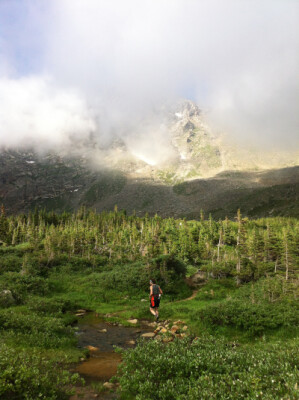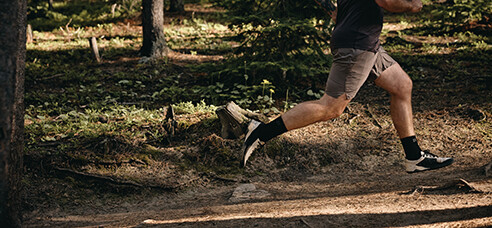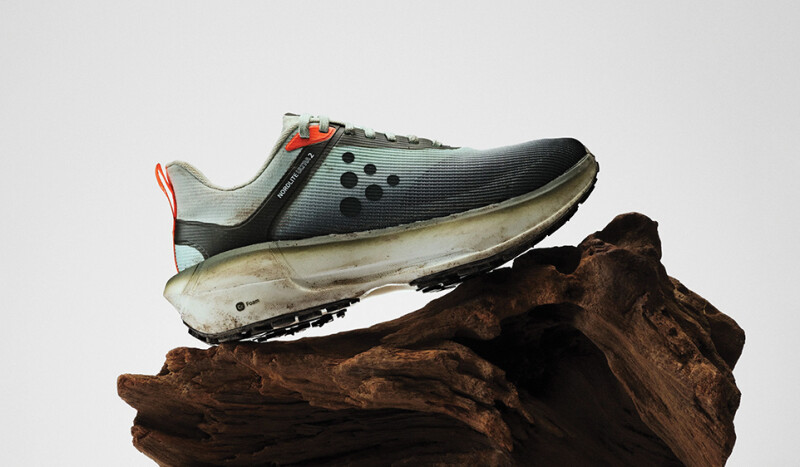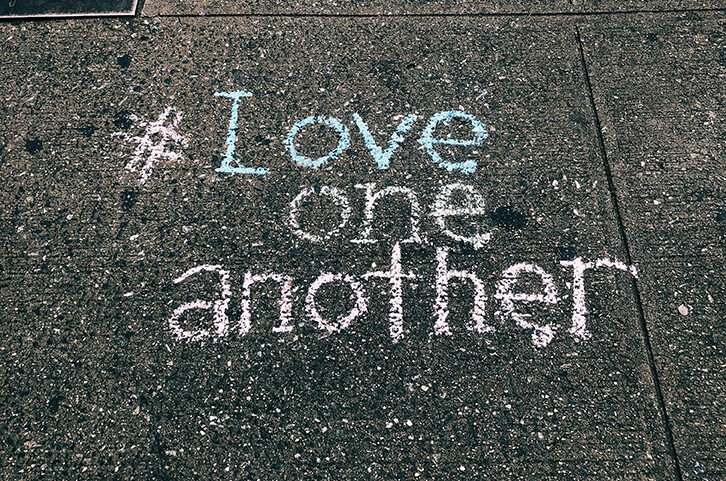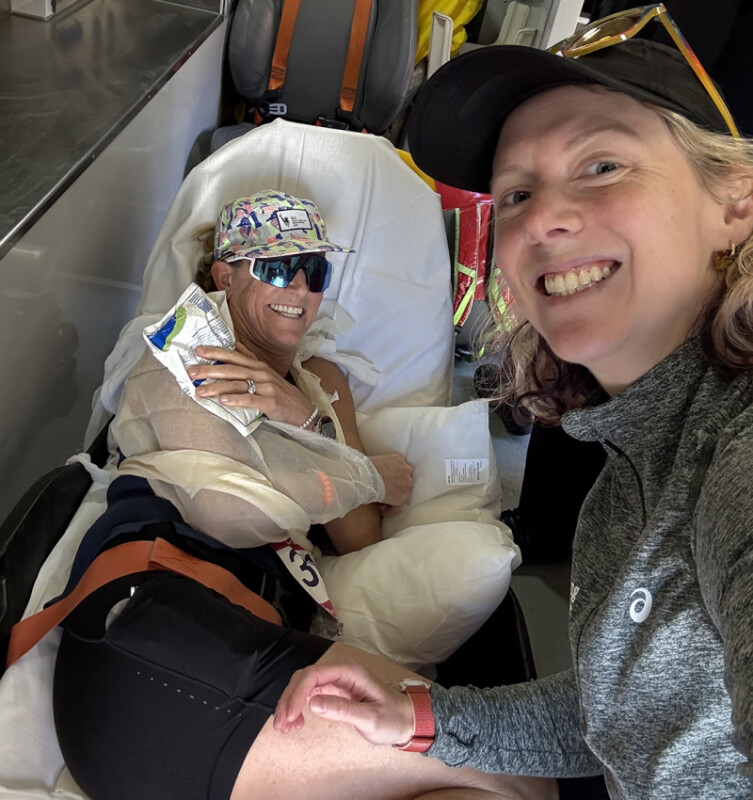Trails represent one of running’s most effective outlets for fitness. The terrain is both challenging as well as beautiful and many of the Meccas for professional training groups are located at altitude and sponsored by a variety of the running shoe brands.
Having some familiarity with the benefits of training at altitude, and seeking the challenges presented in overcoming gravity for the payoff of spectacular vistas, I sought out others of the same inclination — seven men and women who also share a penchant for running footwear. In particular, they revel in the production and use of trail running shoes, as part of the work they do for seven of the footwear brands.
Geeky? For sure, but they also get a thrill from running up mountains, and back, all while covering distances most of the population would expect to manage by car. Read on to discover insights to the Peaks from the Geeks.
How important is trail in your brand’s running shoe line?
“Trails are a natural extension and taking what’s great from the road and putting that in the middle of nowhere. Brooks supports all who run and trail is to many people their favorite place to run. Many road runners will start trail running as a new adventure, so supporting them in their journey is important to us. It also comes with a new layer of safety and protection features, so we pay very close attention to the runner’s needs when developing our trail shoes.” Nick Clinton, Product Line Manager, Brooks Running
“We continue to work to grow our trail footwear line and a big part of that is investing in our pro trail athlete team. Our athletes provide invaluable feedback and have a real hand in helping us make design decisions, not based on industry trends but truly what’s needed and wanted in a piece of footwear for trails — from a gravel path in a neighborhood to the top of Mont Blanc.” Eric Schenker, CEO, Craft Sportswear, US
“Trail running shoes have been an excellent extension of the footwear line. We have brought our knowledge of footwear design to trail running shoes and the category has helped the brand reach new customers that are exposed to the La Sportiva philosophy and creating footwear for moving efficiently in the mountains.” Jonathan Lantz, President, La Sportiva
“Merrell is all about the trails. Merrell has been at the forefront of studying the unpredictable nature of the trail for more than 40 years, from varying terrain types and changing weather conditions across a multitude of climates. The brand has made rapid breakthroughs in the trail run space as they’ve teamed up with athletes to create the Merrell Test Lab (MTL), where they focus on making high-performance trail running shoes that are athlete validated and lab verified. Merrell works with athletes globally on rigorous prototype testing to refine and create products that continue to push the boundaries in the outdoor space.” Jessica Price, Merrell Public Relations Manager
“RunPuma is establishing itself as a top-tier running brand, plain and simple. This means road running, racing and, of course, trail running as a natural extension. Most runners run on a variety of surfaces, everyday and elite runners both, so having a capable trail running shoe is essential to providing solutions for every runner’s need.” Todd Falker, Teamhead, Product Line Management, RunPuma
“The trail category is a significant part of the Saucony lineup. We have award-winning legacies in franchise shoes like the Peregrine and Xodus and continue to innovate and thoughtfully expand the line.” Katie Pyle, Senior Product Line Manager, Performance Run, Saucony
“Trail is important for a couple of reasons — it is my heritage. I’ve been making trail running shoes longer than almost anyone who is still in the industry. And I just love trail running. The category is still growing and becoming more popular as a form of exercise as well as replacing the clunkier trail hiking shoes. We are able to engineer trail running shoes to provide better lateral stability than low-cut hiking shoes, in a lighter weight package, and with better flexibility.” Scott Tucker, Co-founder and Developer, Vimazi
What is special about your trail shoes?
“Our approach begins with problem solving. Reduce the negative issues of traction, fit and protection to eliminate problems so the runner can just enjoy the run. Function is key — fewer blisters, better traction and improving all of the things that can make a run bad. Also, we now have a trail line that sits together with distinction — Cascadia for protection and stability for all-around mountain running, Caldera for big cush and comfort, Catamount for lightweight and speed, and Divide for hybrid road-to-trail. Now the runner can either choose one shoe that works the best for them, or use all of them for different usages/terrains/conditions.” Nick Clinton, Brooks Running
“Our shoes are special because they are durable and versatile. When we think about trails, some people imagine mountains, others imagine forests, some people imagine rolling country side, jungles or coastal headlands. Trails mean different things to different people, so everyone looks for something a little different in a trail shoe. With such a variety of trail types and conditions, the team at Craft works to make shoes that are versatile. Durability is the second component that is absolutely vital. Trail runners are tough on their footwear and if the footwear doesn’t hold up, it’s useless.” Eric Schenker, Craft Sportswear
“Our trail shoes are built for mountainous terrain. Every shoe has sticky rubber and is built to be stable, protective and durable in rugged terrain.” Jonathan Lantz, La Sportiva
“MTL’s material and technologies used help athletes adapt and overcome the ever-changing nature of the trail. The MTL collection is created with athletes in mind and with athlete testing guiding the design process. I’ve been able to test and give feedback on products and I’ve seen my feedback sculpt a shoe that I’m very confident running in. It’s hard to create a shoe that is both light and fast to race in while also giving it good traction and a stable feel, but Merrell has nailed that balance.” Rachel Tomajczyk, Merrell Athlete
“Puma’s line of trail shoes has two distinct advantages. First, we use a super-critical foam in every single shoe. For us that’s our Nitro foam, which is light, cushioned and responsive. Second, our PumaGripATR is an all-terrain rubber, one of the best in the industry. I love watching shoe reviews of other brands and having reviewers mention Puma as the benchmark for grip, traction and durability.” Todd Falker, RunPuma
“We design and build our trail shoes with the trail runner and the trail running experience top of mind. We are very lucky to be able to work closely with our elite trail athletes, ambassadors and everyday trail runners to really make sure that we have a variety of testing and insights to create best-in-class product that addresses the needs of any type of trail runner. Every detail on each shoe in the lineup is thoughtful and intentional, from the foams to the meshes to the lug design and everything in between.” Katie Pyle, Saucony
“Vimazi trail shoes have phenomenal comfort and traction. The sawtooth pattern in between deep lugs is a design I first put into the Montrail Leona Divide and Hurricane Ridge GTX. There is nothing like it. The upper fit is like the child prodigy of Montrail IntegraFit. Fit like a glove, not like a boot. Vimazi’s FastPod design solves the problem of getting enough cushioning to meaningfully absorb impact shock (especially going downhill) and still have great control and stability on uneven terrain.” Scott Tucker, Vimazi
What do you (as a trail runner) look for in a trail shoe?
“Something that doesn’t make me work too hard. I want to enjoy the trails. Great traction, good cushion, protection, security and fit. My favorite trail shoe is one I don’t have to think that much about. I can put it on, depending on what type of run I’m going on, and enjoy the run and nature.” Nick Clinton, Brooks Running
“I look for trail shoes that are durable and versatile. Durability is vital because I want to use products that have a long lifespan and smaller carbon footprint. I want products that are versatile, because while some of my runs are up a mountain or through a jungle, often I’m running on roads from my house to the trails and back again.” Eric Schenker, Craft Sportswear
“The three Cs — cushion, comfort and control. The best trail shoes allow you to forget about what is on your feet and enable you to pour all energy into the trail ahead.” Tim Tollefson, Craft Sportswear Athlete
“Grip, cushion and protection for longer trails and nimbleness and grip for faster more technical trails.” Jonathan Lantz, La Sportiva
“I look for a light shoe with great traction. Trails can be rocky, winding, technical and steep, so I want a shoe that will move as one with my foot and enable me to move well through different terrain. I want a shoe that’s light enough to not drag me down on steep uphills, but also secure enough to trust on a technical downhill.” Rachel Tomajczyk, Merrell Athlete
“Grip is the most essential feature in a trail running shoe, along with security of the upper around my foot with a good fit so I don’t get blisters. I love a trail shoe that drains water and wetness well, because you never know when you’ll encounter a puddle, stream or rainstorm.” Todd Falker, RunPuma
“Cushion, grip and weight – in that order.” Katie Pyle, Saucony
“I look for control. Slipping, falling, twisting an ankle, stubbing a toe — nobody wants that. To get control you need a great fit so the shoe is a smooth extension of your foot. You need surefooted traction. You need forefoot stability. When most people think of stability, they think of anti-pronation motion control with dual density posting in the rearfoot. Not only have we learned over the decades that the anti-pronation designs don’t reduce injury rates, it doesn’t make any sense in a trail shoe where the force and time during a stride is on the forefoot. To get a stable forefoot, you need a firm midsole forefoot.” Scott Tucker, Vimazi
How often do you run trails?
“I live in the middle of town, so I have to be intentional about going to trails. Seattle is surrounded by amazing trails, so plenty of opportunity and availability. I trail run locally almost every weekend, but split it in the weekdays by with rock climbing, biking and yoga.” Nick Clinton, Brooks Running
“Just about every day my feet will touch dirt. However, the tarmac holds a special place in my heart and you’ll often find me pounding pavement between sections of trail.” Tim Tollefson, Craft Sportswear Athlete
“I run trails two or three times a week, but a little less in winter as I tend to do a lot of backcountry skiing instead.” Jonathan Lantz, La Sportiva
“I run trails very often, probably six or seven times a week. I do some speed workouts on the track/roads, but my favorite days are in trails.” Rachel Tomajczyk, Merrell Athlete
“I run trails nearly every day; I’m blessed to have a mile of woodsy single-track between my house and my local track, so that nearly every warmup and cooldown is in the shade of ancient oaks and maples. And beyond exploring other areas, nearly every one of my goal races the past 15 years has been on trail. Of my 66 ultra-marathons, only three were on road.” Todd Falker, RunPuma
“Not as much as I would like these days. Typically, twice a week when my schedule allows. Living in Boston, we have some great local trail systems. Additionally, we’re only a couple of hours away from some amazing trails in New Hampshire and Vermont.” Katie Pyle, Saucony
“Being blessed with living in the PNW and now having Mt. Tabor in my backyard and Forest Park in town (both parks in Portland), I’ve been able to run trails regularly my whole life. As a lifetime runner, I like to mix up the routines and keep it interesting. Trails do that for me. Basically the polar opposite of the treadmill.” Scott Tucker, Vimazi
What is your motivation for trail running?
“The trails are a great way to keep moving and stay active. I love trail running because I can get away from computers, my phone and the modern world. It’s therapeutic and meditative and helps me connect with myself and the world. The added bonus is it helps me stay fit physically and mentally.” Nick Clinton, Brooks Running
“My ‘why’ has constantly evolved. At times I have been driven by performance, recognition and ego. Others have been guided by love, joy and curiosity.” Tim Tollefson, Craft Sportswear Athlete
“I love running on trails because I have to focus on the task at hand and I get to immerse myself in the environment and stay focused on the terrain. The time spent on the trail is time to relax and let the mind wander as it needs while getting an excellent workout without the distractions of traffic or people.” Jonathan Lantz, La Sportiva
“I started off running competitively on the track and roads, but after 16 years of running, the track/roads started feeling monotonous and not as fun to race on. I started running in the trails and I immediately loved the freedom from numbers and pacing on the track and I loved exploring and seeing incredible views, too. I love being able to pair adventure with challenge, so trail running gives me the fun and excitement I need to enjoy training and it also offers me a chance to push my limits.” Rachel Tomajczyk, Merrell Athlete
“Movement and exploring the outdoors, plain and simple. I love seeing different places, feeling the ground under my feet, exploring where others have gone before, and where I imagine I am the first to put together the a loop just the way I did. Connect with nature, feel a softer surface that is natural, instead of just beating man-made pavement every day.” Todd Falker, RunPuma
“Just being out in nature, off the roads and sidewalks and away from traffic. On the trails I can challenge myself in different ways and I worry much less about my pace and more about being in the moment.” Katie Pyle, Saucony
“This is a segue into how most of the world experiences trails: they walk on them. And the question is, why wear a running shoe to walk on trails? The answer is that a trail runner is still better than any other shoe for walking on trails. And let’s not forget that even the best ultrarunners in the world walk a considerable amount of time during an ultra.” Scott Tucker, Vimazi
What trail peak (mountain top, or butte, or anything in between) have you run and how was that experience?
“The thing in common between summits is the quiet, the fresh air, the experience in nature, gathering insights from runners in places around the world. Incredible scenery, I’ve actually spent longer at the summit than I did in getting there. Two in particular stand out: Sea to Sky in Squamish, British Columbia, was breathtaking, and in Chamonix, France, I was running on the UTMB course in the fog and it parted near the top to reveal a view that was incredible. One more: Wonderland trail on Mount Rainier in Washington had me in awe. The Dolomites in Cortina D’Ampezzo, Italy (along the Lavaredo LUT course), and Livigno, Italy, were also breathtaking.” Nick Clinton, Brooks Running
“Our local Mammoth Mountain peak via Dragon’s Back Trail. Despite nearly 100 summits, each ascent I am struck by the grandness and awe-inspiring terrain that we get to call home. No two are ever the same and each teaches me something worth learning.” Tim Tollefson, Craft Sportswear Athlete
“My FKT up Humphrey’s Peak in Flagstaff, Arizona, is one of my favorite peaks. I live in Arizona and Humphreys is the highest peak in AZ, so having the women’s uphill record on it is special. I love the trails for the community and I had two friends, Ryan and Cody, who ran up with me and a big group of friends starting with us, too. They were cheering me on the whole way and it was so cool for me to see what I could accomplish when people were cheering me on the entire way. When we finished, we stayed at the summit for about an hour to take in the views and cheer everyone else up so it was a fun day feeling like part of the running community and taking in some incredible views at the highest point in Arizona.” Rachel Tomajczyk, Merrell Athlete
“King’s Peak is the highest mountain in Utah and that was a special experience for me. Most people take three days to do the 30 miles. I thought I could do it in under 10 hours so started at 4 p.m. to reach the top around midnight and hopefully see the sunrise from the peak. Three hours later it was getting dark and I thought the better of being on a mountain I didn’t know, trying to navigate under headlamp and moonlight. I completed my five-hour ‘warmup’ just after dark, slept in my car for six hours, then summitted the following day in a round trip total time of seven hours. I swear you can see the entire universe from on top of that 14k pile of rocks and there are no words to describe the final mile of descent.” Todd Falker, RunPuma
“One that sticks out recently was running Wildcat Mountain in the White Mountains of New Hampshire. I headed out early and ran past a black bear on the way to the trailhead, which made for an interesting start. It was a beautiful day and the trails were in great shape. Bagged a few summits along the way with spectacular views. All in all, it was a perfect day in the mountains.” Katie Pyle, Saucony
“Difficult to count them all. Certainly there are thousands of amazing runners who have done more and gone faster and higher, so I’m not suggesting that I have done anything exceptional. But I’m happy to have done as much as I have, because there is truly nothing like spending a whole day running through the mountains, taking in views and feeling your body dance nimbly over natural terrain.” Scott Tucker, Vimazi
Any final words of advice or thoughts on trail running?
“Trail running is only dangerous when you don’t know how to do it and where to go. Look for a trail running group, run specialty store or REI for advice/tips.” Nick Clinton, Brooks Running
“I’d just encourage everyone to find what inspires them and go explore. Errol ‘The Rocket,’ who first challenged me to run 100 miles, used to say, ‘Todd, people will live for 30 years with a trail going through their backyard and not know it’s there. You have to find it.’ I’m working at it Errol; I’m going to find them all.” Todd Falker, Puma
